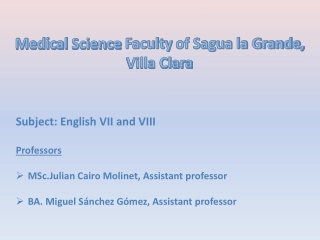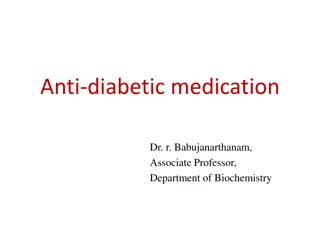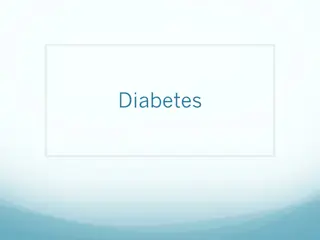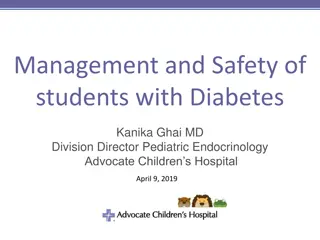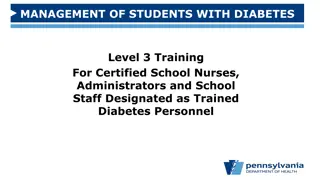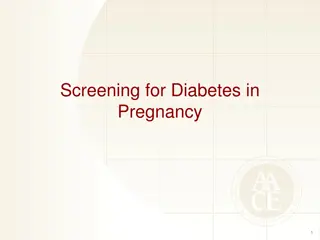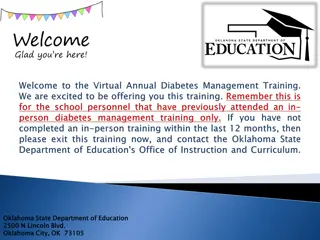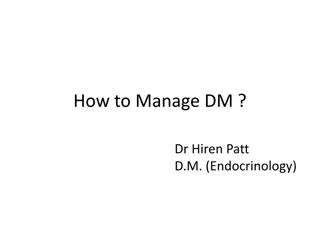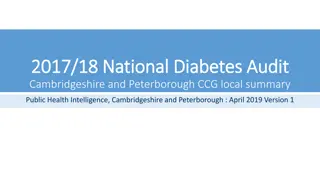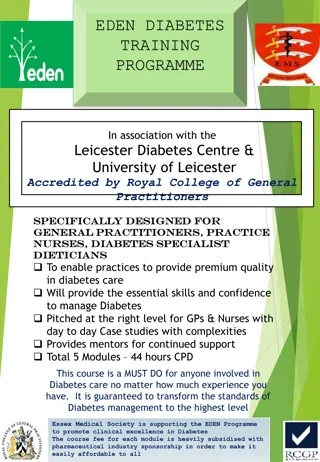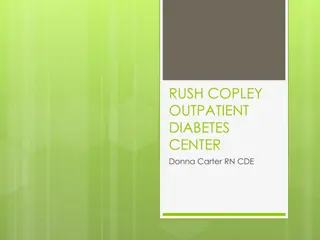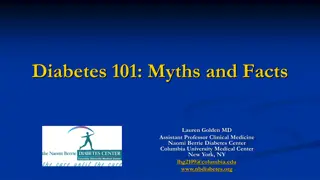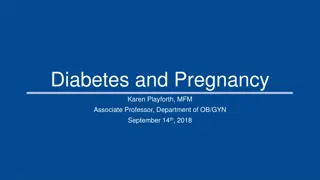Understanding Diabetes: Information for School Personnel
Diabetes is a condition where the body struggles to produce or utilize insulin effectively, leading to high blood sugar levels. This guide provides an overview of diabetes, differences between Type 1 and Type 2, managing diabetes, necessary supplies, and the needs of students with diabetes in a school setting. It also emphasizes the importance of recognizing signs of low and high blood sugar and knowing how to provide appropriate care.
Download Presentation

Please find below an Image/Link to download the presentation.
The content on the website is provided AS IS for your information and personal use only. It may not be sold, licensed, or shared on other websites without obtaining consent from the author. Download presentation by click this link. If you encounter any issues during the download, it is possible that the publisher has removed the file from their server.
E N D
Presentation Transcript
DIABETES General overview of diabetes. Information for all School Personnel
What is Diabetes? Diabetesis a disease in which the body does not make insulin (Type 1) or make and use insulin well (Type 2). Insulin is a hormone that assists your body in using blood glucose, or blood sugar. Without insulin, blood sugar builds up in your blood causing chronic problems in different body systems.
Comparing Diabetes 1 & 2 Type 1 Diabetes Type 2 Diabetes Occurs in about 3 per 1000 youth under 18 in Utah Found mainly in middle-age or older, overweight adults It is not preventable or predictable Becoming more common in children and adolescents Is not caused by eating too much sugar May be controlled by diet and exercise, oral medication and/or insulin Do not need to modify their diet
Managing Diabetes People with diabetes must check their blood sugar multiple times a day to make sure it is not too high or too low. They need insulin if their blood sugar is too highand/or if they are going to eat. They need food if their blood sugar is too low.
Diabetes Supplies Diabetes supplies vary for each student. Some items include: Blood Glucose Meter Tells student their blood sugar level witha drop ofblood Insulin Pump Delivers insulin as pre- programmed Insulin Hormone injected to lower blood sugar levels ContinuousGlucose Monitor Device worn on skinthat sends blood sugar reading to phone. Syringe Delivers Insulin Glucagon Emergency injectionor nasal Spray given for extremely low blood sugar manifested by seizure and/or unconsciousness Pen Delivers insulin
Needs of students with diabetes Must be allowed to carry their diabetic supplies and snacks Take insulin before eating Allowed time tocheck and treat their blood sugar Unlimited drinking water and bathroom privileges Do not require a special diet Cannot be restricted from any school activity or food experience due to diabetes care.
How you can help Find out who has diabetes in your school Recognize signs of and know how to treat low blood sugar- hypoglycemia Recognize signs of high blood sugar- hyperglycemia Find out who in your school is trained for diabetes care
Hyperglycemia-High Blood Sugar Recognize symptoms of high blood sugar- not an emergency but could impact learning Allow accommodations such as liberal bathroom privileges and access to water. The student may need to dose themselves with insulin. Student should not exercise (PE, recess) if showing signs of high blood sugar Extremely high blood sugar may require that they go home.
Hypoglycemia-Low Blood sugar Low blood sugar can be DANGEROUS. Recognize signs of low blood sugar. Don t leave a student with these symptoms ALONE, send them to the office with a buddy . Get them juice or food.
Glucagon-Emergency Medication Given to a diabetic student who is unconscious, semi-conscious or seizing. If ordered by a medical provider, Glucagon can be given by trained staff member. (Find out who is trained at your school) Call 911 after giving glucagon. Turn student onto their side to recover.
Thank you for viewing this Diabetes Training Power Point


